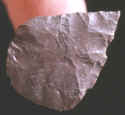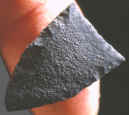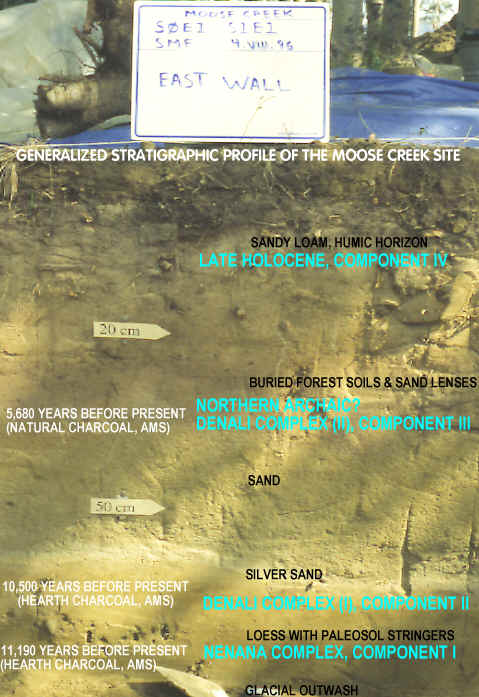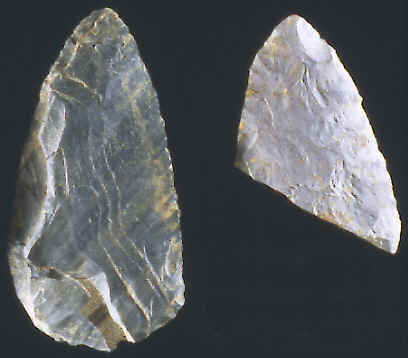|
|
|
The most important archaeological features at Moose Creek are the Denali and Nenana occupations. They were found in buried soil complexes within units two and five. Permafrost conditions did not appear to cause any major alterations to the sites stratigraphy although there was some evidence of permafrost found on the site. |
|
|
The youngest archaeological feature discovered at Moose Creek was found in geological unit number 6 and designated as component number IV. Most of these artifacts were manufacturing flakes made of milky white rhyolite. The 11,000 flakes were found dispersed in thick concentrations. The few tools that were found include some highly battered flake cores, biface fragments, a side-scraper and a graver. There were not enough identifiable stone tools to determine a cultural affiliation. |
|
|
|
|
The most recent or youngest culturally identifiable lithic material found on this site was designated as component III. This feature was discovered in buried soil bands overlying the sand in geological unit 5 approximately 12 inches (31 cm) below the surface. The artifacts that diagnostically assign component III to a specific culture are several microblades and a microblade rejuvenation tablet. The use of microblade technology places this feature within a Denali complex occupation. A complete Northern Archaic-like projectile point made of basalt was also found along with other tools, including end scrapers, a blade, and a broken lanceolate projectile point preform. There were no hearths found at this level. |
|
| CONTINUE ON TO PAGE 4 | |
|
"REFERENCES"
1991,
"Clovis Origins and Adaptations," "The Nenana Complex of
Alaska and Clovis Origins," by Ted Goebel, Roger Powers and Nancy
Bigelow, pp 49-76. |
|



